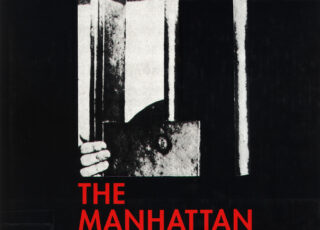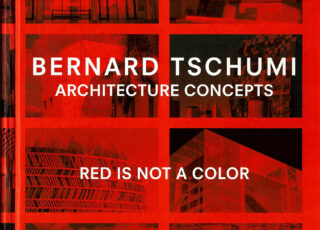Levy, Baroque and the Political Language of Formalism (1845 – 1945): Burckhardt, Wölfflin, Gurlitt, Brinckmann, Sedlmayr
This study in intellectual history places the art historical concept of the Baroque amidst world events, political thought, and the political views of ...
Continue Reading →Brown, The Genius of Rome 1592-1623
At the close of the 16th century, Europe’s most talented painters flocked to Rome, the Eternal City, to execute commissions for popes, princes, ...
Continue Reading →Tschudi, Baroque Antiquity
Why were seventeenth-century antiquarians so spectacularly wrong? Even if they knew what ancient monuments looked like, they deliberately distorted the representation of them ...
Continue Reading →Sohm, Style in the Art Theory of Early Modern Italy
Style is one of the oldest and most powerful analytic tools available to art writers. Despite the importance of style as an artistic, ...
Continue Reading →Van Eck, British Architectural Theory 1540-1750
Although it is often assumed that British writing on architectural theory really started in the 18th century, there is in fact a large ...
Continue Reading →Rinne, The Waters of Rome
In this pioneering study of the water infrastructure of Renaissance Rome, urban historian Katherine Rinne offers a new understanding of how technological and ...
Continue Reading →Montagu, Roman Baroque Sculpture
Draws on contemporary biographies and a wealth of hitherto unpublished archival material to illuminate the position and practice of the Baroque sculptor, to ...
Continue Reading →Montagu, The Aesthetics of Roman Eighteenth Century Sculpture
Few art historians would dispute that Jennifer Montagu is one of the most distinguished scholars of Italian (mostly Roman) Baroque sculpture. Besides her ...
Continue Reading →- _English Language
- 17th Century
- 17th culture and other cities in Italy
- Christian Iconography
- Empire, Architecture + Catholicism
- Italy
Levy, Propaganda and the Jesuit Baroque
In this provocative revisionist work, Evonne Levy brings fresh theoretical perspectives to the study of the “propagandistic” art and architecture of the Jesuit ...
Continue Reading →Hauser, The Social History of Art, Volume II
First published in 1951, Arnold Hausers work presents an account of the development and meaning of art from its origins in the Stone ...
Continue Reading →Most liked books

Tschumi, The Manhattan Transcripts
May 23, 2025
Tschumi, Red is not a Color
May 23, 2025Recent Comments
Categories
- _English Language 1454
- _French Language 55
- _German Language 69
- _Italian Language 54
- _Latin Language 45
- 1750-1850 64
- 17th Century 77
- 17th culture and other cities in Italy 5
- 19th century 45
- 20th Century 151
- 21th Century 75
- Aesthetics 5
- Afrofuturism 3
- Ancient Literature 37
- Anthropocene 1
- Anthropology 3
- Architectural Theory 228
- Architecture + Philosophy 37
- Architecture and Literature, Symbolism 36
- Art 13
- Art Theory 110
- Artificial Intelligence 11
- Artists in Rome 20
- Astronomy 2
- Autobiography 1
- Bernini 19
- Biology 5
- Catalogue 2
- Christian Iconography 18
- Christianity 13
- Cinema 2
- City 45
- Classical 1
- Construction 1
- Contemporary 2
- Design 29
- Digital Architectonics 26
- Drawings 41
- Economy 31
- Empire, Architecture + Catholicism 14
- England & British Isles 26
- Enlightenment Library 127
- Evolution 6
- Fashion 6
- Feminism 20
- Film Festival 1
- France 47
- Gender and Sexuality Studies 5
- Gothic 13
- Greek, Roman Library 99
- Historiography 43
- Humanism 12
- India 5
- Islam 5
- Italy 80
- Landscape Architecture 8
- LGBT 1
- Libraries 0
- Linguistics 6
- Literary Criticism 11
- Literary Theory 82
- Literature 95
- Low Countries (Benelux) 14
- Mathematics 61
- Medicine 4
- medieval library 38
- medieval literature 12
- Modern 51
- Monuments + Conservation 27
- Music Theory 1
- Mysticism 4
- Mythology 19
- Nature, Ecology, Animals 4
- Neurobiology 1
- Opera 5
- Philosophy 346
- Physics 16
- Poetry 6
- Politics 76
- Popes, Vatican, Rome 27
- Portrait, Sculpture, Materiality 56
- Post-Modern 22
- Programming 2
- Psychology 22
- Religion 23
- Renaissance 86
- Renaissance Library 80
- Rhetorics 1
- Roman Architecture 21
- Rome 122
- Schinkel 8
- Science 57
- Sociology 21
- Sound 7
- Sources 56
- Spain 10
- Switzerland 48
- Uncategorized 73
- Urbanism 53
